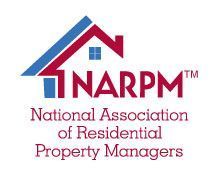
Single-Family vs. Multi-Family Rentals: Which Is Right for Your Portfolio?
Single-Family vs. Multi-Family Rentals: Which Is Right for Your Portfolio?
When building a real estate portfolio, one of the crucial decisions investors must make is selecting between single-family and multi-family rental properties. A thorough understanding of the fundamental differences between the two can enable investors to make informed decisions that support the growth and long-term sustainability of their portfolio.
Below are key benefits and risks to consider when evaluating single-family versus multi-family rental properties for your investment strategy:
Single-Family Rentals
Benefits:
- Simplified Management: Single-family homes generally involve managing a single tenant or family per property, streamlining the rental process. This allows property owners to focus on cultivating strong relationships with tenants, which can result in more consistent occupancy rates.
- Long-Term Tenancy: Single-family rentals often attract families looking for stability and a strong sense of community. As a result, they tend to secure longer-term tenants, which can lead to lower turnover rates.
- Lower Initial Investment: Typically, purchasing a single-family home requires a smaller upfront investment compared to multi-family properties, making it more accessible to a wider range of investors. Additionally, financing options for single-family homes may be more straightforward, allowing investors to secure loans with more favorable terms.
- Appreciation Potential: Single-family homes, especially those located in desirable neighborhoods with good schools and amenities, may experience faster appreciation. This potential for capital growth can offer investors a solid return on investment over time, making it an appealing option for those focused on long-term gains.
Risks:
- Vacancy Risk: A key risk associated with single-family rentals is the potential for vacancies. If a tenant moves out, the property may remain unoccupied until a new tenant is found, leading to a loss of rental income.
- Limited Income Potential: Single-family homes can only generate income from one tenant or family, which limits the rental income to a single payment. This restriction can impact scalability, particularly for investors looking to grow their portfolio.
- Higher Maintenance Costs: While managing single-family homes is often simpler, maintenance and repair costs per unit can be higher compared to multi-family properties.
Multi-Family Rentals
Benefits:
- Multiple Income Streams: A key advantage of multi-family rentals is the ability to generate income from several units. This diversification helps stabilize cash flow, as the overall rental income is less vulnerable to fluctuations. Even if one unit is vacant, the income from other units can continue, providing a more consistent revenue stream for the property owner.
- Economies of Scale: Multi-family properties enable cost savings through economies of scale. Centralized maintenance and management reduce per-unit costs. For example, routine maintenance, property management, and renovations can be carried out more efficiently across multiple units, resulting in overall savings for the property owner.
Risks:
- Higher Initial Investment: Multi-family properties often require a larger financial investment. Additionally, securing financing may involve more complex research and planning, which can be overwhelming for those unfamiliar with the process.
- Increased Management Demands: Multi-family properties typically require more active management, especially for owners who choose to self-manage. With multiple tenants, there is a need for more frequent communication, conflict resolution, and oversight of maintenance activities.
- Tenant Turnover and Maintenance Challenges: While multi-family rentals can offer steady income, they may also experience higher tenant turnover rates compared to single-family homes. This can lead to more frequent tenant screenings and leasing activities. Additionally, with multiple units, maintenance issues can occur simultaneously, requiring better preparedness to handle increased repair demands and associated costs.
For more information about rental investments, visit Hunter Rentals & Sales, at 1503 W Stan Schlueter Loop, Killeen, TX 76549, United States, or call (254) 634-3311. You can also visit www.hunterrentals.com







